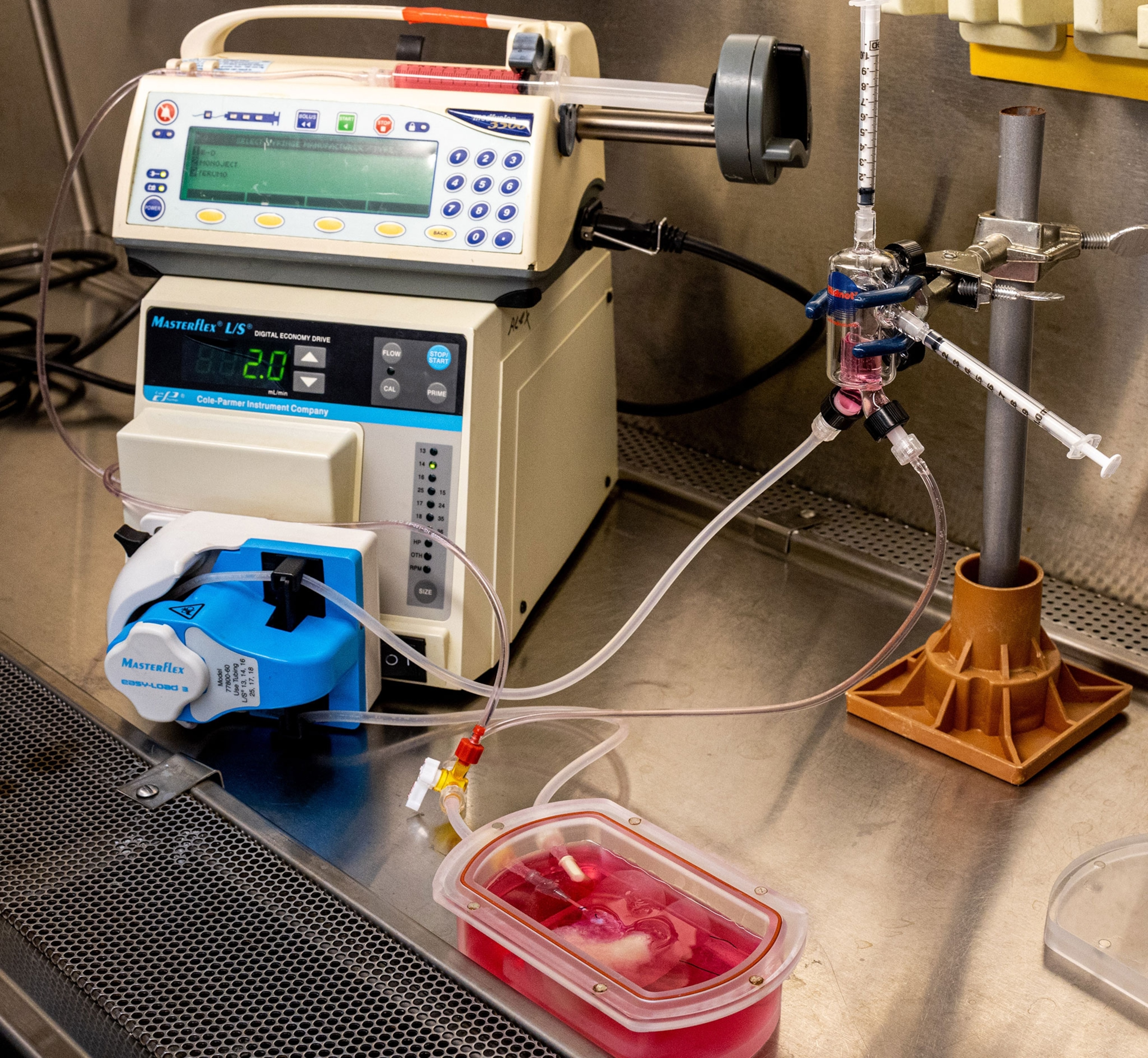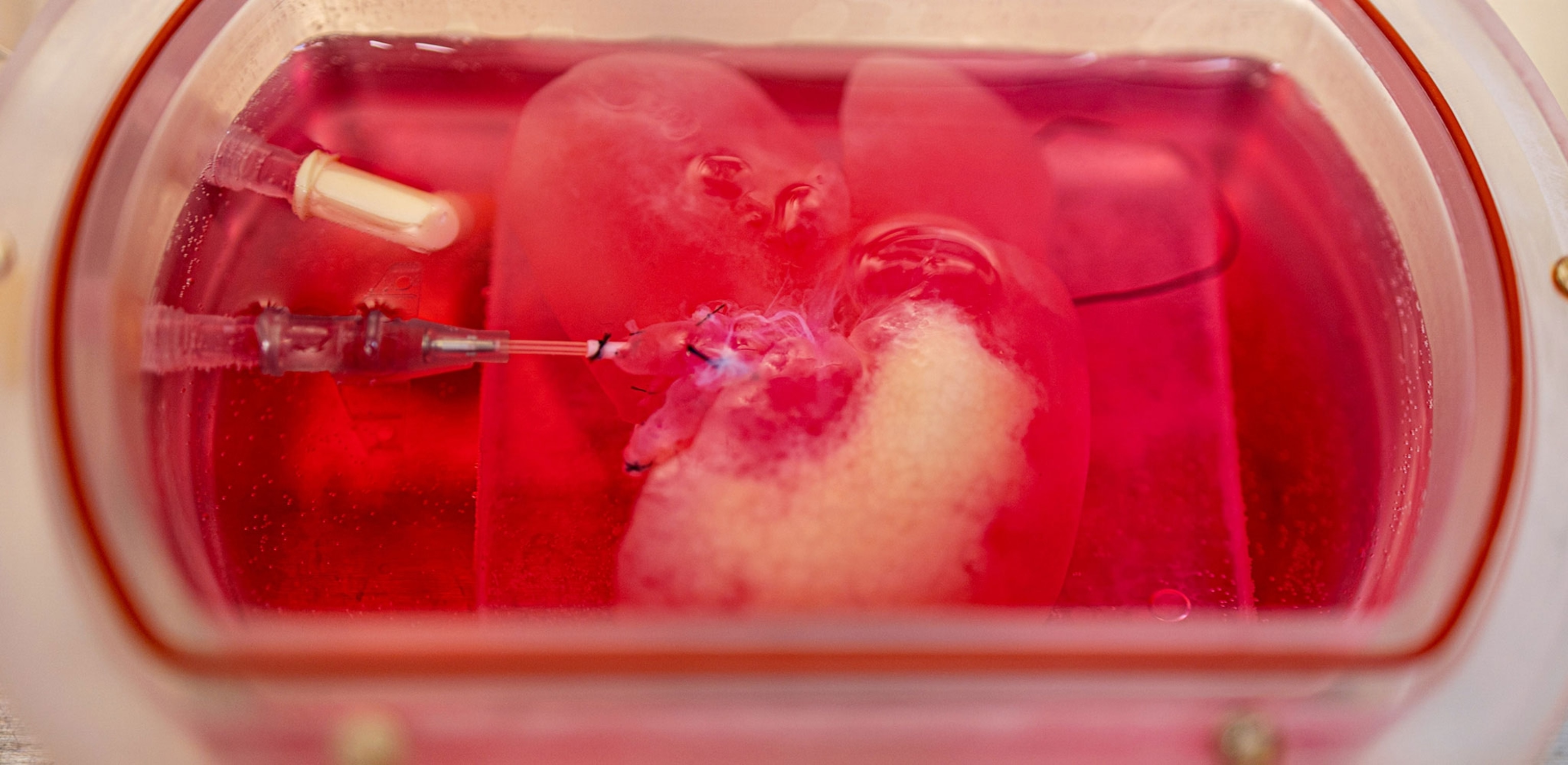The fleshy blob looks essentially like a human liver, the vital internal organ that—among many functions—aids digestion and filters blood. But it didn’t come from a person. Instead, scientists crafted this mini-liver from human cells, creating the most complex organ of its kind yet grown in a lab.
What’s more, as they report today in the journal Cell Metabolism, the team had a very specific purpose in mind: They wanted to give this liver a disease.
As obesity cases rise, so does the occurrence of non-alcoholic fatty liver disease, in which fats collect in liver cells and can eventually lead to organ failure. In the United States alone, some 80 to 100 million people are currently affected, but how this disease progresses remains unclear.
While animals have been vital in advancing our understanding of the genetics underlying a host of diseases, there’s a wide gap between the biology of mice and that of humans. This latest proof-of-concept study highlights mini-livers as a promising way to study diseases as they progress, test treatments, and get a tighter grasp on the liver’s basic functions and dysfunctions.
“This is quite a clever way of trying to ... create functional tissue to model liver disease, but in a very human-specific way,” says Joe Segal, a liver researcher at the University of California, San Francisco, who was not involved in the study.
“I think that’s the future: being able to synthesize and fabricate human livers where you can freely manipulate their genome and mimic diseases to study biology,” says senior study author Alejandro Soto-Gutierrez of the University of Pittsburgh School of Medicine.
Recipe for a liver
Pint-sized organs, often called organoids, are becoming ever more common, with scientists growing tiny versions of brains, stomachs, esophagi, and more. Most of these lab-made organs are truly minuscule, made of clumps of cells measuring mere millimeters or just hundreds of microns across. While these organoids have revolutionized biological and medical research, they’re limited in what they can do, mimicking organ function in a highly simplified way. (Learn how scientists turned a spinach leaf into beating human heart tissue.)
For the mini-livers in the latest study, the scientists were instead hoping to simulate more of the complexity of a full-size organ, crafting a liver that's two to three inches across. To accomplish this, Soto-Gutierrez and his colleagues collected human skin cells and introduced an important tweak in their genome so that, with just a drop of a drug, the researchers could tamp down on a particular gene’s activity.
Their target was the SIRT1 gene, which has been shown in animal studies to be important for fat accumulation in livers. The researchers then reprogrammed the skin cells to revert into what are known as pluripotent stem cells—a type of cell that can grow into any variety found in the body—and directed them to grow into liver cells.

But cells in a dish is are far cry from a complete organ, and to take on the familiar liver form, they needed some sort of structure. For this, the team turned to rats.
As past work revealed, washing rat livers with a type of detergent can strip away the rodent-specific tissues, leaving behind a translucent liver framework. This not only provides structure, but also the signals for tissue maintenance and development, explains Shay Soker of the Wake Forest School of Medicine, who was not involved in the latest study but has conducted similar work growing human livers in an animal framework.
“That’s the beauty of this work compared with other work that’s been published, where it’s really a scaffold-free or matrix-free system,” he says.
The researchers infused their tweaked liver cells into the transparent structure, along with other cell types present in human livers, such as immune system cells called macrophages and tissue-supporting cells called fibroblasts. In about three to four days, the mini-liver started to take shape.
Finally, with a drop of the drug to suppress SIRT1 activity, the researchers introduced the disease, and in just 24 hours or so, the liver started growing fatty.
“You could actually see the disease coming in” Soto-Gutierrez says.
Tiny livers and big hopes
The finished mini-livers are remarkably similar to diseased human livers, including the array of fats that collected in each. But even more exciting, Soto-Gutierrez says, was the comparable function: The mini-livers had 41 of the 50 metabolic pathways also found in a diseased human liver.
“That makes me think we can really mimic diseases and functions in vitro with the stem cells and mini-livers,” Soto-Gutierrez says.
The researchers hope their work will help tackle one of the biggest issues with non-alcoholic fatty liver disease: early identification. Right now, diagnosis requires a biopsy, which is an invasive procedure and is not casually undertaken. By studying the disease’s progress in the mini-liver, researchers may be able to find more easily testable markers.
The system is not perfect; for instance, liver disease is more complex than tamping down expression of a single gene, Soto-Gutierrez acknowledges. It's also still unclear if liver cells grown in the lab function precisely like those in a person, a challenge for all lab-grown human livers, Segal adds.
"It’s still very difficult to replicate an exact in vivo human liver environment," he says.
But the latest work offers hope for future study of many diseases—as well as for one day growing full-size human livers in the lab for organ transplant. Currently, most organ recipients must take drugs to prevent their own bodies from rejecting foreign tissue. But if doctors could grow organs in the lab using a patient’s own cells, that could eliminate that life-long requirement.
While this technology remains many years away from reality, Soto-Gutierrez is excited about what comes next. He plans on testing the effects of controlling more genes and crafting even more complex systems to study disease.









